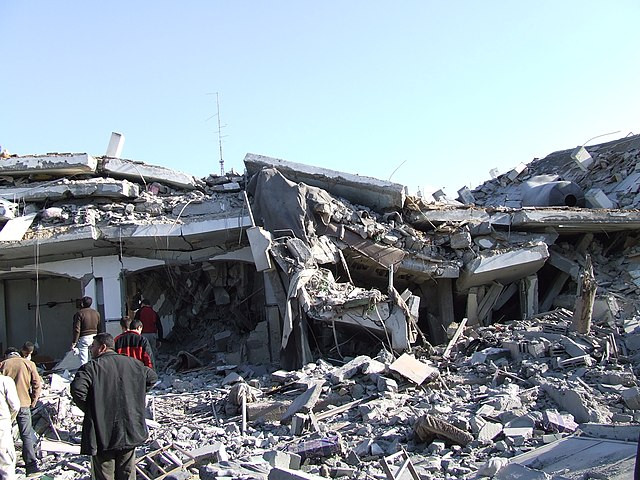A chaotic scene unfolded Tuesday at a Gaza aid distribution center operated by the U.S.-backed Gaza Humanitarian Foundation (GHF), as thousands of Palestinians surged past security barriers seeking food amid a deepening crisis. Israeli troops fired warning shots into the air and U.S. contractors briefly withdrew from the site, underscoring mounting tensions and logistical failures as famine looms over the besieged enclave.
The incident at Tel al-Sultan, captured on video and widely circulated, showed large crowds tearing down fences and climbing over barricades at the GHF-run facility. "The Israeli army was shooting in the air, and the Americans and their workers retreated, making it impossible to distribute aid to the people," said Wafiq Qdeih, who had arrived at the site in search of food.
Palestinian health officials confirmed that one person was killed and 48 others injured in the chaos. The fatality occurred at the Red Cross Field Hospital in Rafah, where the victim succumbed to severe wounds.
GHF, which says it has distributed 8,000 food boxes totaling 462,000 meals, acknowledged the disorder. "The GHF team fell back to allow a small number" of Palestinians to collect aid safely, the organization stated, citing protocol aimed at preventing casualties. A security source said American contractors did not fire weapons and that operations resumed later in the day.
Israel Defense Forces said troops fired warning shots outside the compound and denied any aerial fire. The Israeli military maintains that 95 aid trucks entered Gaza on Tuesday. COGAT, the Israeli authority overseeing aid to Gaza, said both the new mechanism and United Nations systems were operational.
However, UN officials and aid groups sharply criticized the GHF operation. "We have seen yesterday the shocking images of hungry people pushing against fences, desperate for food. It was chaotic, undignified and unsafe," said Philippe Lazzarini, Commissioner-General of UNRWA. "It is a waste of resources and a distraction from atrocities."
Jens Laerke, spokesperson for the UN Office for the Coordination of Humanitarian Affairs (OCHA), echoed the condemnation. "We do not participate in this modality... It is a distraction from what is actually needed," Laerke told reporters in Geneva. He called for Israel to reopen all crossings and expedite the flow of emergency supplies.
The GHF distribution model has drawn criticism for bypassing established UN channels and operating only in southern and central Gaza. Aid experts warn this could serve Israel's goal of depopulating the north. Prime Minister Benjamin Netanyahu has said all residents should be displaced to southern Gaza.
GHF says it is preparing three more distribution sites-two in the south and one in central Gaza-though all are located in evacuation zones. "They want order, but there will be no order because these are desperate people who want to eat and drink," said a Gazan named Abu Ramzi, describing the long journey and confusion at the site.
Despite Israeli claims of improved aid flows, UNRWA and other humanitarian agencies have warned that access remains restricted. "We and our partners have a detailed, principled, operationally sound plan," said UN Secretary-General spokesperson Stephane Dujarric. "And frankly, these video, these images, are heartbreaking to say the least."
The U.S. and Israel have declined to name all organizations involved in the new delivery mechanism, but photos showed aid boxes labeled with "Rahma Worldwide," a Michigan-based nonprofit. The group says it provides assistance to vulnerable populations globally.






